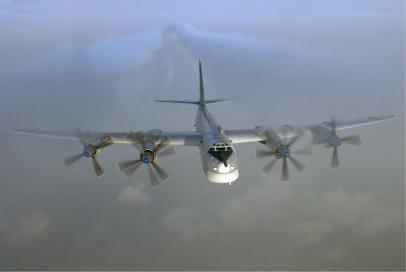Close Encounters with the Russian Military: Implications for Arctic Security Cooperation?

See The Simons Foundation's Disarming Arctic Security page for briefing papers on military policies and practices in the Arctic region by Ernie Regehr, Senior Fellow in Arctic Security at The Simons Foundation.
Close Encounters with the Russian Military: Implications for Arctic Security Cooperation?
November 25, 2014
What does the recent burst of Russian military activity or brinkmanship, as some have characterized it,[i] mean for the Arctic? While current Russia-NATO strategic posturing may accurately reflect the sorry depths to which relations between Russia and most of the Western world have sunk,[ii] a new SIPRI report on “Russia’s Evolving Arctic Strategy”[iii] is among some timely antidotes to the return-of-the-cold-war-in-the-Arctic narrative.
Close encounters with the Russian military do seem to be on the rise. Russian bombers have been on more frequent flights over the Barents, Norwegian, and Baltic Seas, as well as along the Pacific and Atlantic coasts of North America. Further south there has been a Russian air presence over NATO vessels in the Black Sea, and ships of the Russian navy sailed near Australia’s northern exclusive economic zone in a not fully appreciated military accompaniment to the G-20 summit.
There have been test missile launches and ongoing announcements of troop commitments and military facilities upgrades in the Arctic. There was even a claimed Russian land annexation – at least that’s how an overly excited blogger[iv] characterized the emergence of a tiny, 500 square meter island in the Russian Arctic, all of one meter above the Ocean level. The previously unidentified sand island, named the Yaya Island, is situated roughly midway between the Russian town of Sagastyr in the archipelago at the mouth of the Lena River and the New Siberian Islands. Given that the island is essentially a sand bar well within Russia’s exclusive economic zone (EEZ), sovereignty over it is neither in doubt nor controversial – in other words, this is not an audacious Russian land grab. It might conceivably extend Russia’s EEZ, but the idea, suggested by some,[v] that the Russians could, or would, deploy armed forces there is not to be taken seriously.
The European Leadership Networkvi] however, has produced a serious Policy Brief[vii] identifying what it calls “close military encounters between Russia and the West” during the first eight months of 2014. Of the almost 40 incidents reported, a few were in the Arctic. There were incidents of largely routine Russian long-range bombers and related aircraft entering US and Canadian air identification zones in international airspace above the Beaufort Sea. Two specific incidents are noted, along with more general references to other flights. In each of these cases cited, American and/or Canadian aircraft responded. The report notes Russia’s detention of a Lithuanian civilian vessel in international waters in the Barents Sea above Norway and the Kola Peninsula. The vessel was towed to Murmansk. The only other Arctic incident reported is the Russian claim that it expelled an American submarine from the same area of the Barents Sea, but the Americans insist it didn’t happen, that there were no US subs there at the time. Continue reading...
Ernie Regehr, O.C. is Senior Fellow in Arctic Security at The Simons Foundation, and Research Fellow at the Institute of Peace and Conflict Studies, Conrad Grebel University College, University of Waterloo.